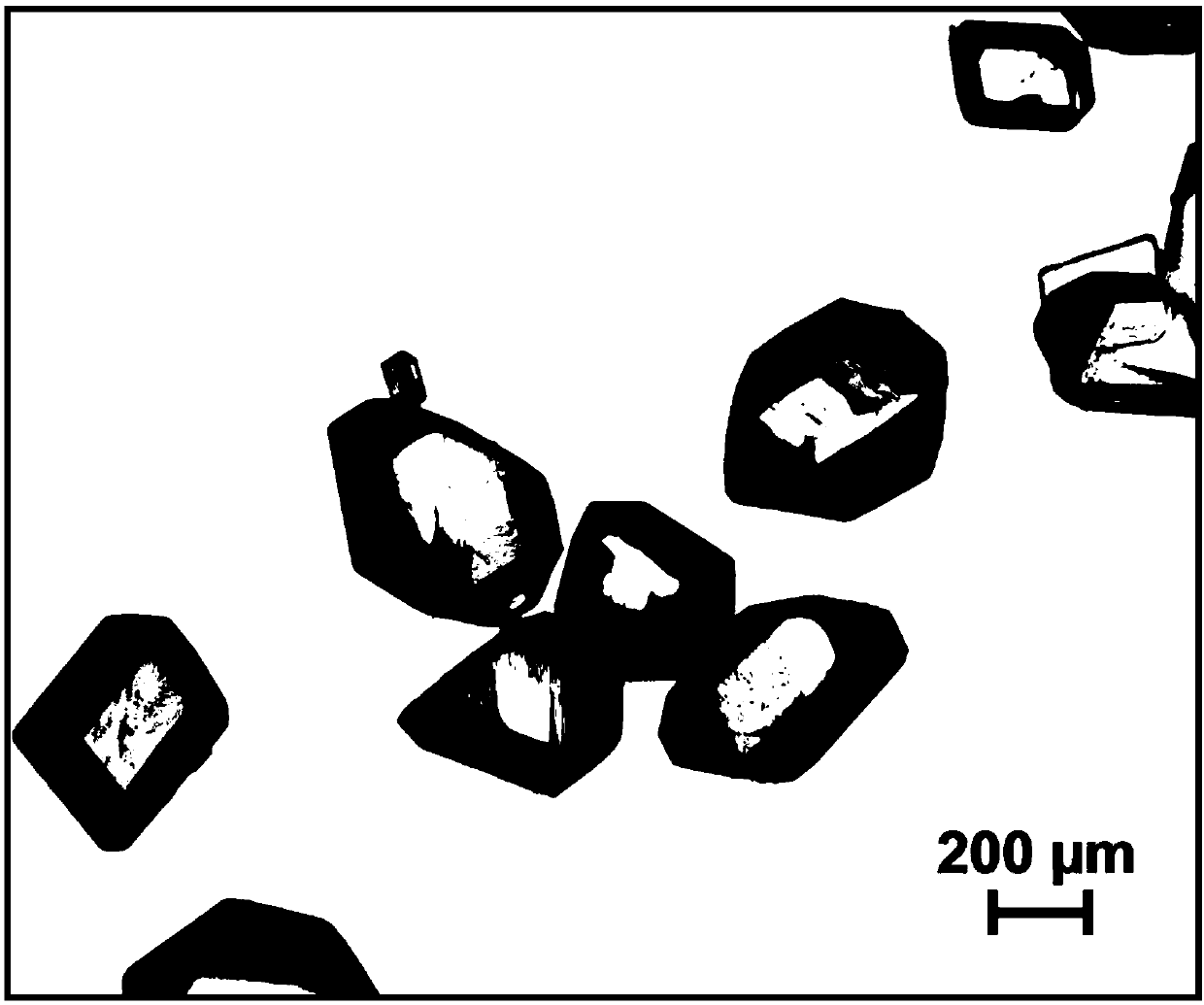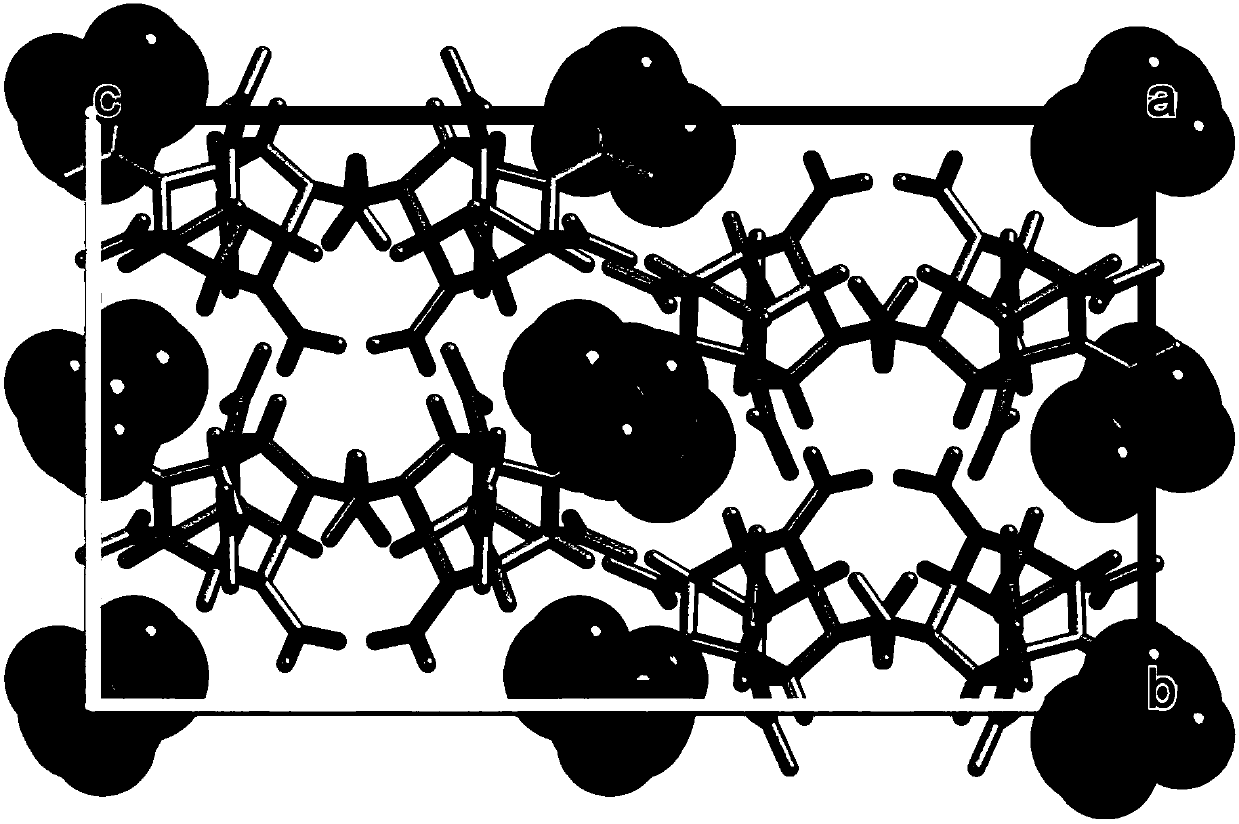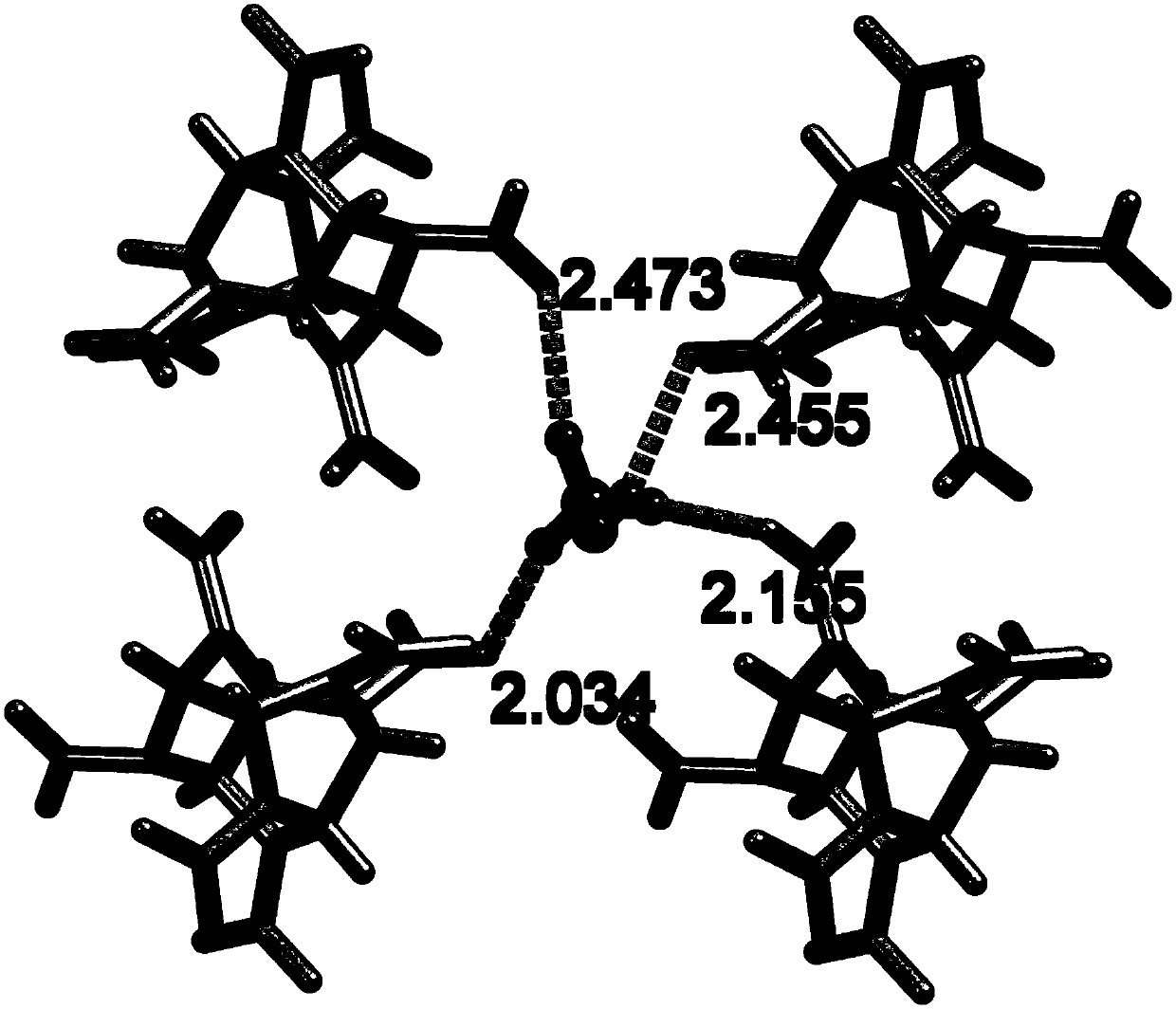Method for preparing subject-object explosive with methanol molecules embedded in crystal cells
A technology of host-guest and methanol, applied in the direction of explosives processing equipment, a single substance as explosives, explosives, etc., can solve the problems of batch preparation of unfavorable methanol molecule host-guest explosives, explosive sensitivity that cannot meet the test, and harsh experimental conditions, etc., to achieve It is conducive to batch preparation, convenient product processing, molding and use, and the effect of mild experimental conditions
- Summary
- Abstract
- Description
- Claims
- Application Information
AI Technical Summary
Problems solved by technology
Method used
Image
Examples
Embodiment 1
[0033] (1) Measure 30ml of anhydrous methyl acetate and place it in a 250ml Erlenmeyer flask, weigh 10g of dried CL-20 raw material and add it, stir magnetically at 400r / min until completely dissolved, then add 15ml of anhydrous methanol solvent , stir evenly;
[0034] (2) Using low-temperature solvent-non-solvent method for recrystallization, slowly drop 120ml of anhydrous petroleum ether into the CL-20 solution at a rate of 0.1ml / min, while maintaining the temperature of the solution in the liquid nitrogen temperature control device At around -20°C, magnetic stirring crystallization;
[0035] (3) After all the petroleum ether has been added dropwise, continue to stir and crystallize for 30 minutes, then filter, wash, dry, and dry in a 60°C oven for 2 hours to obtain CL-20-based host-guest explosive crystals with methanol molecules embedded in the unit cell.
Embodiment 2
[0037] (1) Measure 15ml of anhydrous acetone and place it in a 150ml Erlenmeyer flask, weigh 10g of dried CL-20 raw material and add it, stir magnetically at 800r / min until completely dissolved, then add 75ml of anhydrous methanol solvent, and stir Uniform;
[0038] (2) Recrystallization by low-temperature solvent evaporation method, vacuum distillation of the solution in the conical flask through a vacuum pump, the vacuum degree is 0.01MPa, and at the same time, the temperature of the solution is maintained at about 10°C in the liquid nitrogen temperature control device, and magnetically stirred crystallization;
[0039] (3) After the solution starts to become turbid, continue to stir and crystallize for 60 minutes, then filter, wash, dry, and dry in a 60°C oven for 2 hours to obtain CL-20-based host-guest explosive crystals with methanol molecules embedded in the unit cell.
Embodiment 3
[0041](1) Measure 15ml of anhydrous tetrahydrofuran into a 150ml Erlenmeyer flask, weigh 10g of dried CL-20 raw material and add it, stir magnetically at 50r / min until completely dissolved, then add 30ml of anhydrous methanol solvent, and stir Uniform;
[0042] (2) Recrystallization by low-temperature solvent evaporation method, the Erlenmeyer flask is placed in a sealed desiccator, and 50g of color-changing silica gel is placed at the bottom of the desiccator, and the temperature of the solution is controlled by an external circulation in the liquid nitrogen temperature control device at the same time Around 0°C;
[0043] (3) After the solution starts to become turbid, continue to crystallize for 6 hours, then filter, wash, dry, and dry in a 60°C oven for 2 hours to obtain CL-20-based host-guest explosive crystals with methanol molecules embedded in the unit cell.
PUM
 Login to View More
Login to View More Abstract
Description
Claims
Application Information
 Login to View More
Login to View More - R&D
- Intellectual Property
- Life Sciences
- Materials
- Tech Scout
- Unparalleled Data Quality
- Higher Quality Content
- 60% Fewer Hallucinations
Browse by: Latest US Patents, China's latest patents, Technical Efficacy Thesaurus, Application Domain, Technology Topic, Popular Technical Reports.
© 2025 PatSnap. All rights reserved.Legal|Privacy policy|Modern Slavery Act Transparency Statement|Sitemap|About US| Contact US: help@patsnap.com



